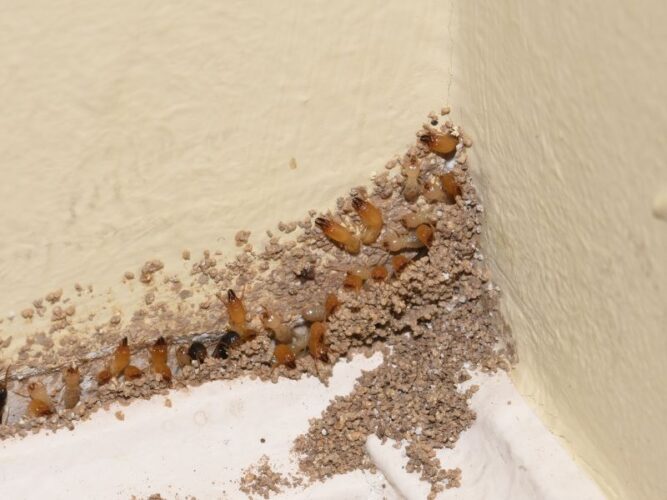Termites are notorious pests that can cause extensive damage to homes and other structures if left unchecked. Identifying termite infestation early on is crucial in preventing significant damage and expensive repairs.
In this article, we will explore the key signs and indicators to help you identify termite infestation in 2023.
Discarded Wings
One of the primary signs of a termite infestation is the presence of discarded wings. Flying termites, also known as swarmers or alates, are reproductive termites that venture out to establish new colonies.
These swarmers shed their wings once they find a suitable location. If you notice a pile of discarded wings near windowsills, doorways, or other entry points, it may indicate the presence of a nearby termite colony.
Mud Tubes
Termites build mud tubes to provide moisture and protection while traveling between their colony and a food source. These tubes are typically constructed from soil, feces, and saliva.
To identify a termite infestation, check for mud tubes along the exterior foundation of your home, crawl spaces, or basements. Termites use these tubes to navigate through inaccessible areas and can often be found near pipes or wooden structures.
Hollow or Damaged Wood
Termites feed on cellulose present in wood, causing damage to structures from the inside out. Tap or gently knock on wooden surfaces in your home, such as walls, floors, or furniture. If the wood sounds hollow, or you notice it crumbling easily, it could be a sign of termite activity.
Additionally, look for blistering or peeling paint on wooden surfaces, as termites can cause moisture build-up, leading to paint damage.
Frass or Termite Droppings
Termite droppings, also known as frass, are small pellets or powdery substances left behind by termites. These droppings can resemble sawdust or wood-colored pellets. If you come across piles of frass near wooden structures or termite-infested areas, it indicates an active termite presence.
Keep in mind that frass is often found near termite entry points, so inspect areas around windows, doorframes, or wooden furniture.
Clicking Sounds
Certain termite species, particularly soldier termites, produce audible clicking or head-banging sounds when alarmed or threatened.
While it may be challenging to hear these sounds without specialized equipment, if you notice unusual clicking noises coming from walls or wooden structures, it could indicate the presence of termites. These sounds occur due to the termites’ mandibles striking hard surfaces as a defensive mechanism.
Sagging Floors or Ceilings
As termites consume wooden supports within a structure, it can lead to weakened structural integrity. If you notice sagging or uneven floors, or if your ceilings start to show signs of drooping or cracking, it might be a result of termite damage.
Pay attention to any sudden changes in the appearance or stability of your home’s interior, as they can be indicators of a severe termite infestation.
Conclusion
Identifying a termite infestation in its early stages is crucial for minimizing damage and implementing effective treatment measures. By paying attention to signs such as discarded wings, mud tubes, hollow or damaged wood, frass, clicking sounds, and structural issues, you can take prompt action and protect your property from the destructive impact of termites.
If you suspect a termite infestation, it’s recommended to seek professional pest control services to address the problem effectively and ensure long-term termite prevention in 2023 and beyond.

